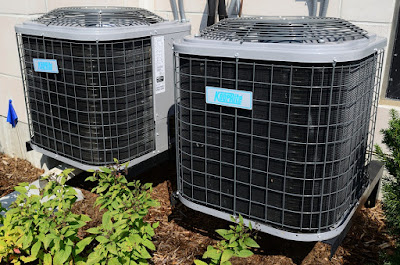The global heat pump market is expected to grow from an estimated $54.34 billion in 2018 to $94.42 billion by 2023, at a CAGR of 11.68%, from 2018 to 2023. In 2018, the market in Asia Pacific is estimated to be the largest for heat pumps, followed by Europe. This trend is expected to continue until 2023. The market is set to witness growth because of increased investments in the residential and commercial sectors, infrastructure developments, and ability to reduce carbon emissions.
Heat pumps are widely used in various applications, including residential, commercial buildings, and industrial settings for heating and cooling. They are also used in the power generation sector by various end-users because of their efficient and low CO2 emissions as compared with Combined Heat and Power (CHP) systems.
Download PDF Brochure: https://www.marketsandmarkets.com/pdfdownloadNew.asp?id=153294991
The significant contribution of heat pumping technology in reduction of CO2 - emissions drives the global market
Energy is necessary in our daily lives as it fuels businesses, powers homes, hospitals, and schools. However, energy production leads to the emission of greenhouse gases. Carbon dioxide (CO2), which is one of the greenhouse gases, is released in a substantial amount through the burning of fossil fuels, such as coal, oil, and natural gas. Many countries aim to reduce their primary energy demand due to the increasing CO2–emissions and implement policies to restrict the greenhouse gases in the environment. Heat pumps offer an energy-efficient way to provide space heating through the aerothermal and geothermal technologies. Exhaust air, groundwater, and surface water (lake, river or pond) are other examples of commonly used heat sources. Many countries are concerned regarding the increase of energy–related CO2-emissions as a result of using fossil fuels for energy generation. Carbon emissions associated with energy consumption and generation can be reduced greatly when heat pump systems are used instead of fossil-fueled systems. This is driving an increase in the number of factories, manufacturing units, and residential complexes with energy-efficient heat pump installations.
Asia Pacific is expected to lead the heat pumps market during the forecast period because of increased investments in residential and commercial and growing industrialization in the China and Indian region. The governments in these countries are drawing up policies to ensure that energy-efficient equipment such as heat pumps are being installed in new buildings, which is expected to drive the market for heat pumps. The demand from China would lead the market in Asia Pacific.
Request Sample Pages: https://www.marketsandmarkets.com/requestsampleNew.asp?id=153294991
The heat pump market is dominated by a few major players that have a wide regional presence and are established brand names. The leading players in the market include Daikin (Japan), United Technologies (US), Midea (China), NIBE (Sweden), Ingersoll Rand (Ireland), Glen Dimplex (Ireland), Stiebel Eltron (Germany), Viessmann (Germany), Panasonic (Japan), Mitsubishi (Japan), Vaillant (Germany), and Danfoss (Denmark).

No comments:
Post a Comment